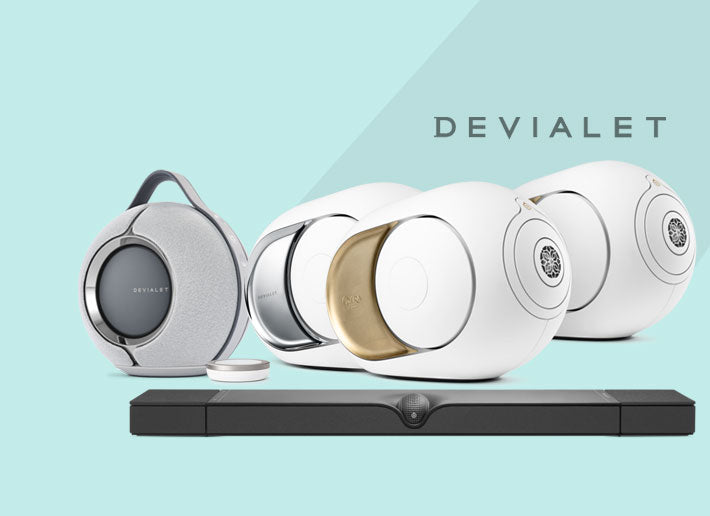From tackling room acoustics to driving future innovations in the audio industry, this transformative technology is setting new standards for sonic excellence
Achieving the best possible sound quality in your space often feels like a mysterious art. Do your speakers sound as good as they could? Is your room helping or hurting your audio? Enter speaker simulation, a cutting-edge tool that helps demystify and optimise your audio setup. Combined with smart speaker positioning, this technology gives you the power to make your audio system shine, regardless of your room's quirks.
Speaker simulation is a revolutionary technology that uses computer-based models to predict how your speakers will perform in a given environment. It essentially creates a virtual version of your room and speakers, allowing end-users to identify how sound will behave. Using advanced algorithms, simulations factor in details like speaker placement, room dimensions and materials to predict frequency response and resonance.
Instead of guessing where to place your speakers or endlessly tweaking settings using trial and error, speaker simulation can offer precise recommendations for placement and adjustment—saving both time and frustration.
Overcoming Common Audio Challenges
One of the biggest hurdles in achieving great sound is managing how your room interacts with your speakers. Hard surfaces create unwanted echoes, while oddly shaped spaces can muffle certain frequencies. Even the placement of furniture can make or break your listening experience. Traditionally, optimising sound in such conditions involved tedious experimentation.
Speaker simulation changes the game by providing you with a detailed analysis of your room’s acoustics. Tools powered by this technology show how sound waves travel through your space and how they’re affected by objects and surfaces. With this information, you can make informed decisions about adjustments, such as adding rugs, repositioning furniture, or using acoustic panels to tame reflections.

Image credit - Comsol
Optimising Speaker Positioning for Maximum Impact
Even the most advanced speakers can sound underwhelming if placed poorly. Speaker simulation doesn’t just show you where your sound is falling short, it also offers solutions. For example, by simulating different configurations, you can determine the ideal distance between your speakers, their height and their angle relative to your listening position.
Many audiophiles follow the “equilateral triangle rule”—placing speakers and the listener at equal distances from one another. While this is a good starting point, every room is different. A speaker simulation tool can fine-tune this approach for your unique space, ensuring you’re sitting in the “sweet spot” where sound is most balanced and immersive.
Speaker simulation isn’t just for audio engineers or tech enthusiasts—it’s something anyone can benefit from. Imagine setting up a home theater and knowing exactly where to place your subwoofer for the perfect bass, or arranging a small bookshelf speaker to maximise clarity without overwhelming the room. Simulation technology empowers you to make these adjustments with confidence.
For example, if you enjoy streaming music or watching movies, simulation can ensure your speakers produce accurate sound across all frequencies to prevent distorted bass or overly bright highs. Instead, every note and dialogue line will be delivered as intended by the creators.
Speaker Basics 101: A closer look at the anatomy & audio specs explained
Speaker Simulation Meets Room Correction Technology
Many modern audio systems come equipped with room correction tools, but speaker simulation takes this concept a step further. While room correction focuses on fine-tuning audio output to counteract room acoustics, simulation helps you address the root causes before the sound even reaches your ears.
Using simulation in tandem with digital signal processing (DSP), you can achieve a level of clarity and precision that’s hard to match. For instance, simulations can predict how your room’s dimensions, materials and furnishings impact low-frequency performance, which is often the most challenging aspect of sound reproduction. Low frequencies tend to pool in corners or create standing waves that result in uneven bass response. With speaker simulation, you can identify these problem areas and position your subwoofer or bass traps accordingly to create a smoother, more consistent bass.
Beyond bass, speaker simulation can optimise sound dispersion for mid and high frequencies. By understanding how sound waves reflect off walls, ceilings and furniture, the simulation suggests the ideal tilt or height adjustments for your speakers. This ensures that sound arrives at your ears without losing clarity or balance, enhancing everything from crisp dialogue in movies to intricate details in music.
Moreover, simulation combined with DSP allows for real-time adaptability. Imagine hosting a gathering and rearranging your furniture—a quick simulation update can recalibrate your system to account for the new layout, maintaining the same high-quality audio performance. This flexibility makes simulation not only a tool for initial setup but also an ongoing solution for evolving spaces.
Simulation is indispensable for multi-channel setups like Dolby Atmos. It ensures that overhead and surround channels are placed and calibrated to create a cohesive 3D sound field, enveloping you in an immersive audio experience. Whether you’re watching a blockbuster or enjoying a live concert recording, simulation ensures every speaker in the system works harmoniously to deliver breathtaking sound.
Also Read: Eight Sound Philosophies That Define Superlative Speakers
Advances in Simulation Technology and The Road Ahead

Image credit - FasterCapital
What makes speaker simulation so accessible today is the integration of advanced algorithms and AI. These technologies simplify complex acoustic modelling, making it easier for everyday users to benefit. For instance, some simulation apps allow you to scan your room using a smartphone camera and microphone, generating a detailed acoustic map within minutes.
AI-driven tools also offer real-time suggestions for optimising your setup. Say you move your couch or add a new rug—simulation software can instantly recalculate the acoustics and provide updated recommendations. This level of adaptability ensures your audio system remains perfectly tuned, no matter how your space evolves.
As simulation technology continues to advance, it’s becoming a standard feature in more audio systems. Cloud-based platforms are making powerful simulation tools more accessible, while integrations with smart home devices promise even greater convenience. Imagine asking your virtual assistant to analyse your room and automatically adjust your speakers for optimal sound—that future isn’t far off.
For end-users, this means more than just better sound. It means less frustration, more enjoyment and a deeper connection to the media you love. Whether you’re setting up a new system or refining an existing one, speaker simulation and smart positioning are your keys to unlocking unparalleled audio performance. With these tools, great sound is no longer a luxury—it’s something everyone can achieve.
Explore our premium range of speaker systems and contact us for a tailored solution. Our team of experts can help you get up and running in no time.









